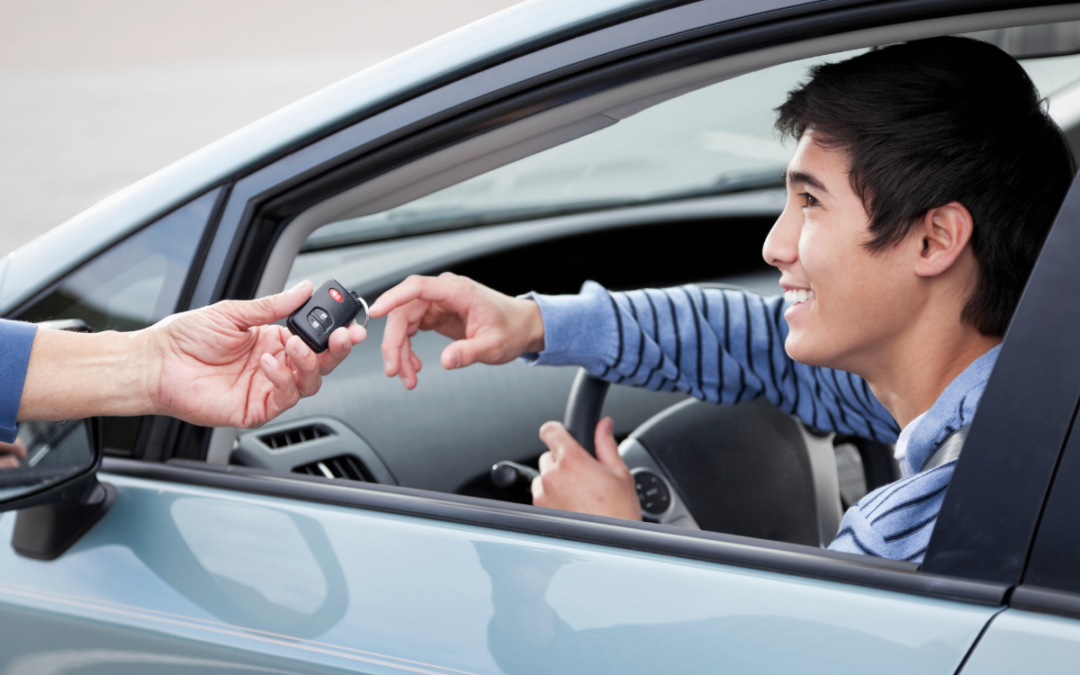A Parent’s Guide to Teen Driving Safety
As your teenager approaches the driving age, it’s natural to feel a mix of excitement and apprehension. Handing over the car keys to your teen is a significant milestone that comes with a great responsibility. Ensuring their safety on the road is paramount. Here’s a comprehensive guide for parents to navigate the complexities of teen driving and ensure their child’s safety.

1. Understanding the Risks
Teen drivers aged 16 to 19 are significantly more likely to be involved in fatal car accidents compared to other age groups. Research has consistently shown that the fatal crash rate for teens in this age bracket is nearly three times as high per mile driven as it is for drivers aged 20 and older (IIHS-HLDI). Factors such as inexperience, overconfidence, and susceptibility to distractions contribute significantly to this increased risk. It’s important for parents to understand these risks and communicate them effectively to their teens.
2. Setting Clear Rules and Expectations
Before your teen starts driving, establish clear rules and consequences related to driving. Discuss the importance of obeying traffic laws, the dangers of speeding, and the repercussions of distracted driving. Implement a parent-teen driving agreement that outlines these rules and the consequences for breaking them. This can serve as a constant reminder of your mutual commitment to safe driving.
3. Graduated Driver Licensing (GDL)
Take advantage of the Graduated Driver Licensing (GDL) system, which is designed to provide new drivers with a period to learn under lower-risk conditions. Familiarize yourself with your state’s GDL laws and ensure your teen fulfills each stage, from obtaining a learner’s permit to securing a full license. These stages typically include supervised driving and restrictions on nighttime driving and passenger numbers.
4. Encouraging Defensive Driving
Teach your teen the basics of defensive driving, including keeping a safe following distance, being aware of their surroundings, and anticipating the actions of other drivers. Defensive driving courses are also available and can provide valuable practical experience in a controlled environment.
5. Dealing with Distractions
Distractions are a leading cause of accidents among teens. Enforce a strict no-cell-phone policy while driving, and limit the number of passengers in the car, especially during the first year of driving. Encourage your teen to keep their focus solely on the road.
6. Practice, Practice, Practice
The more practice your teen gets, the better. Initially, accompany them on various routes and in different driving conditions. Gradually increase the complexity of driving situations as they become more confident and skilled. This hands-on experience is crucial for building their driving competence.
7. Choosing the Right Vehicle
When it comes to selecting a vehicle for your teen, safety should be your top priority. Opt for a car equipped with modern safety features like anti-lock braking systems (ABS), electronic stability control (ESC), and a high safety rating from the Insurance Institute for Highway Safety (IIHS). Avoid high-performance vehicles that might encourage speeding.
8. Monitoring and Feedback
Consider using technology to monitor your teen’s driving. Apps and devices can track speed, braking habits, and other driving behaviors, providing insights into your teen’s driving patterns and areas for improvement. Review this data with your teen and provide constructive feedback.
9. Insurance and Legal Responsibilities
Update your insurance to include your teen driver and educate them about the legal aspects of driving, including the serious consequences of DUIs and the financial implications of traffic violations and accidents.
10. Staying Engaged
Stay actively involved in your teen’s driving, even after they’ve obtained their license. Regularly discuss their driving experiences, challenges, and successes. Keeping the lines of communication open is key to their continuous improvement and commitment to safety.

A Parent’s Guide to Teen Driving Safety
By taking a proactive and supportive approach to your teen’s driving, you can significantly reduce their risk on the road. Remember, your involvement doesn’t end when they pass their driving test. Safe driving is a lifelong commitment, and with the right guidance, your teen can become a responsible driver.
Drive with Confidence!
Keep up with all the latest driving news. Expolre our blog packed with essential tips and expert advice on all things related to DRIVING!




